 Created by MWNCIBOO
Created by MWNCIBOO
Spiritual guide on a one way trip to painting enlightenment
So as budding miniature painters we all want to grab a miniature, some paint and a brush and set to it. This is how most of us learn from actually doing, but it is inefficient and wasteful especially as the price of wargaming seems to be continually on the rise. We can combat this by actually studying and trying to understand what it is we are trying to achieve, we all look with our eyes and distinguish colours, but do we actually understand why it is we see colours or shades? What is the definition of a Hue? What are we trying to do by Shading or Highlight? Welcome to the world of Colour Theory and the medium of light.
COLOUR THEORY (Science Alert - Are you sitting Comfortably?)
LIGHT
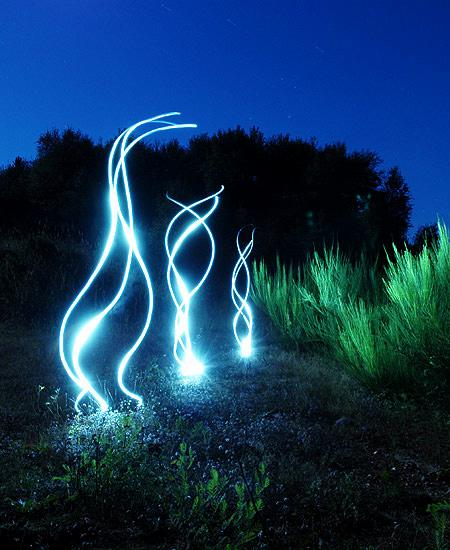
Little timmy and his two friends whilst trying to figure out how entropy works, divided sucessfully by Zero, achieved Zen and passed onto the next level of existance!
Light or visible light is the portion of electromagnetic radiation that is visible to the human eye, responsible for the sense of sight. Visible light has a wavelength in a range from about 380 or 400 nanometres to about 760 or 780 nm with a frequency range of about 405 THz to 790 THz. In physics, the term light often comprises the adjacent radiation regions of infrared (at lower frequencies) and ultraviolet(at higher), not visible to the human eye.
The light we frequently use for miniature painting tends towards a soft yellow rather than a true White light source. This can throw off your colour scheme and models can look quite different in the cold hard light of day. A way to combat this is to use a Day light bulb in a desk lamp. This is extremely important when taking photographs of miniatures.

SHADOWS
A shadow (rather obviously) is an area where direct light from a light source cannot reach due to obstruction by an object. It occupies all of the space behind an opaque object with light in front of it. The cross section of a shadow is a two-dimensional silhouette, or reverse projection of the object blocking the light. The sun causes many objects to have shadows and at certain times of the day, when the sun is at certain heights, the length of shadows change.
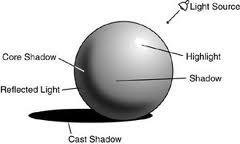
Newton observed that colour is not inherent in objects. Rather, the surface of an object reflects some colours and absorbs all the others. We perceive only the reflected colours. Thus, red is not "in" a Tomato. The surface of the tomato is reflecting the wavelengths we see as red and absorbing all the rest. An object appears white when it reflects all wavelengths and black when it absorbs them all.
RGB Colour Model
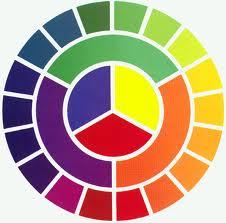
Media that transmit light (such as television) use additive color mixing with primary colors of red, green, and blue, each of which stimulates one of the three types of the eye's color receptors with as little stimulation as possible of the other two. This is called "RGB" color space. Mixtures of light of these primary colors cover a large part of the human color space and thus produce a large part of human color experiences. This is why color television sets or color computer monitors need only produce mixtures of red, green and blue light. See Additive color. Other primary colors could in principle be used, but with red, green and blue the largest portion of the human color space can be captured. Unfortunately there is no exact consensus as to what loci in the chromaticity diagram the red, green, and blue colors should have, so the same RGB values can give rise to slightly different colors on different screens.
HSL & HSV Colour Models
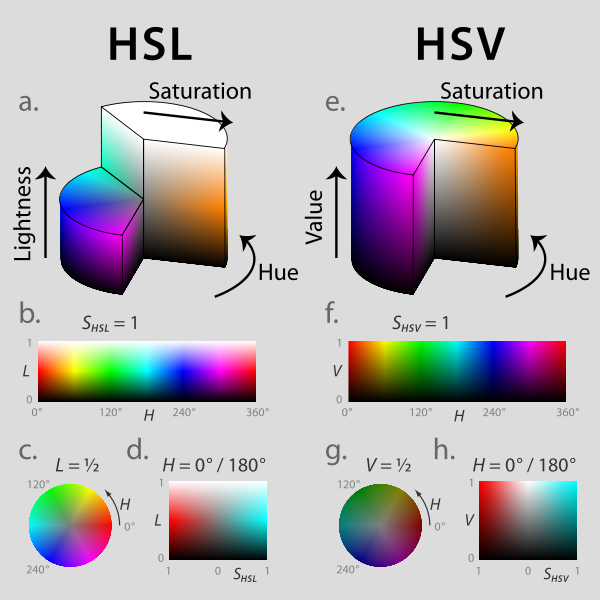
Recognizing that the geometry of the RGB model is poorly aligned with the color-making attributes recognized by human vision, computer graphics researchers developed two alternate representations of RGB, HSV and HSL (hue, saturation, value and hue, saturation, lightness), in the late 1970s. HSV and HSL improve on the color cube representation of RGB by arranging colors of each hue in a radial slice, around a central axis of neutral colors which ranges from black at the bottom to white at the top. The fully saturated colors of each hue then lie in a circle, a color wheel. HSV models itself on paint mixture, with its saturation and value dimensions resembling mixtures of a brightly colored paint with, respectively, white and black. HSL tries to resemble more perceptual color models such as NCS or Munsell. It places the fully saturated colors in a circle of lightness ½, so that lightness 1 always implies white, and lightness 0 always implies black. HSV and HSL are both widely used in computer graphics, particularly as color pickers in image editing software. The mathematical transformation from RGB to HSV or HSL could be computed in real time, even on computers of the 1970s, and there is an easy-to-understand mapping between colors in either of these spaces and their manifestation on a physical RGB device.
As Miniature painters the best Model for our needs. is the Colour Sphere...

The top of the sphere is white and the bottom black so all the colours of the spectrum are vertically arranged in tone from very light to very dark. The centre of the Sphere is an exact mid-tone of Grey. From the centre of the Sphere the colours grow brighter until on the outside , they are at their most intense. This variation in intensity is known as the Chroma. As you can clearly see this is a useful colour map for planning tone and shading.
HIGHLIGHTS
When we paint an Object we are trying to mimic light reflecting in 3 Dimensions, this is more a trick of the eye by convincing the brain it can see reflections that aren’t actually there. It is important to place the Highlights (The stronger reflections of light) in the correct positions otherwise the result will automatically register in your sub-concious and the model will look slightly strange.
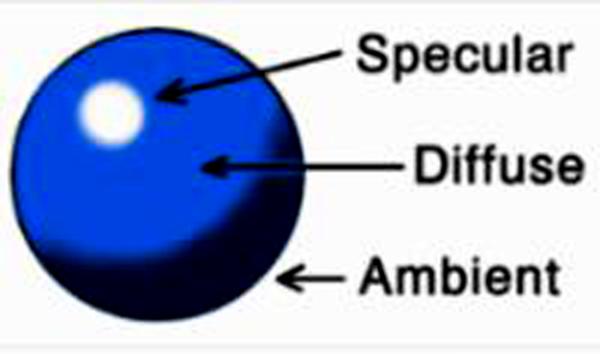
This is a relatively simple model but it serves well and can be used to produce effective looking gems, stones and precious metals. It is not applicable to all models and it is also dependant on the objects shape. A more Complex version is below.
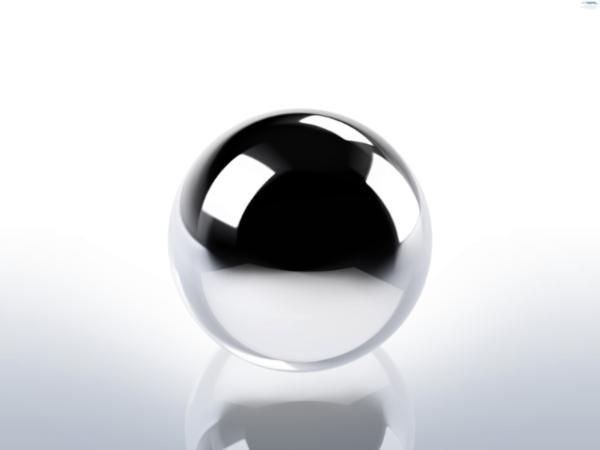
Complex Highlighting is when you have a material that is reflecting almost all the light that hits the surface of the Material. Chrome effects are an interesting example, if you look at the example sphere above and try to ignore the shape and silhouette of the sphere and concentrate on the colours, it is possible to see very clearly defined colours. If you were to paint these blocks and shapes of colour you can mimic a chrome effect.
This miniature in the Gallery (Uploaded by SpacePanzee but I am not sure who painted it) is a superb example of Complex highlighting. The colours used trick the Human eye it believing the model is Chrome but as you look closely you realise it is a trick of the eye and really shows the painters understanding of Colour, Light and shade and the skill required to achieve this in a believable way so that you have to do a double take to check you are not looking at miniature that has been Chromed. It is also a good example of Non-Metallic Metal Painting (NMM).

So thats colour and light in a nutshell, Painting 101 part 1 done.......On to paint then...